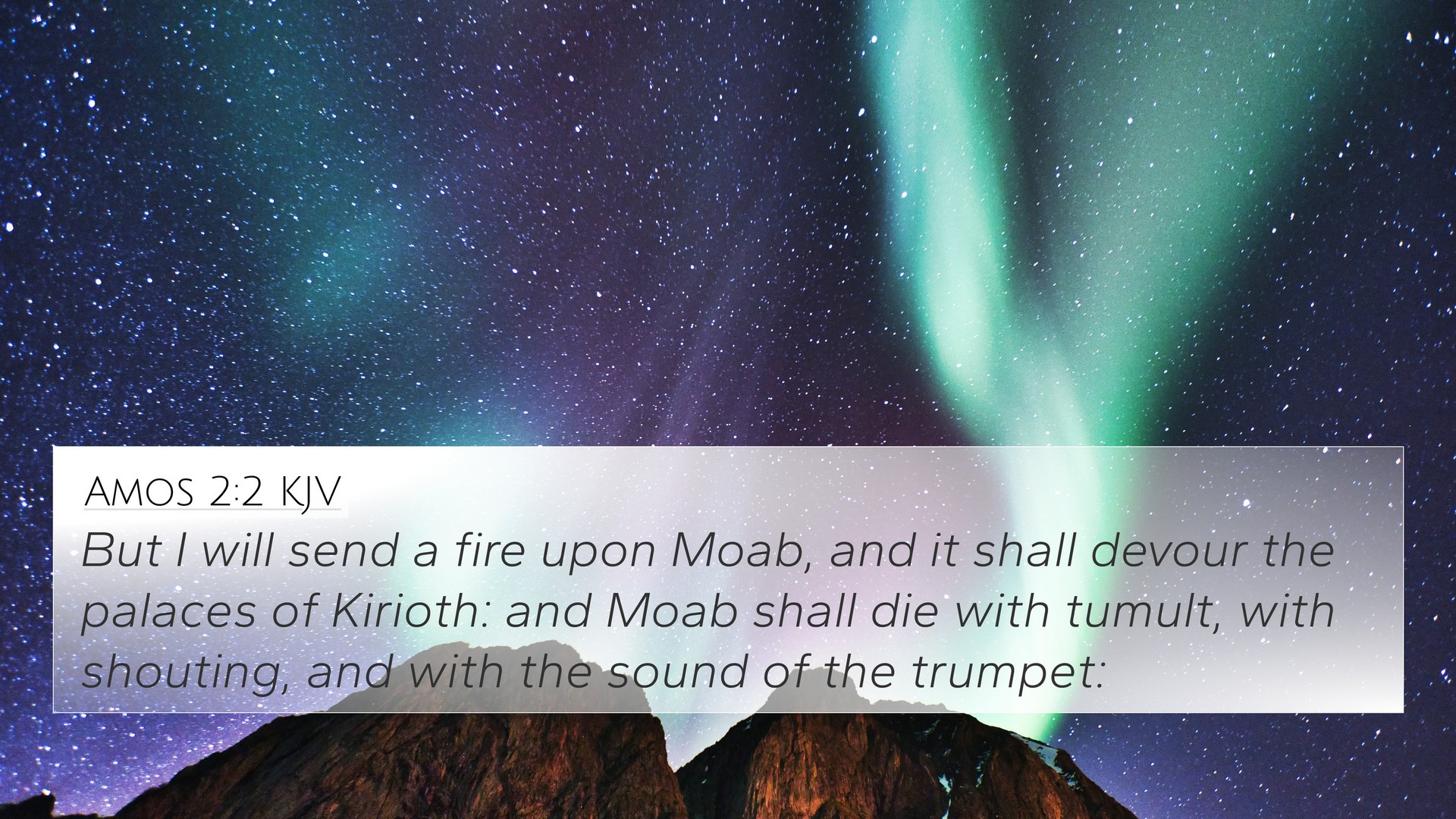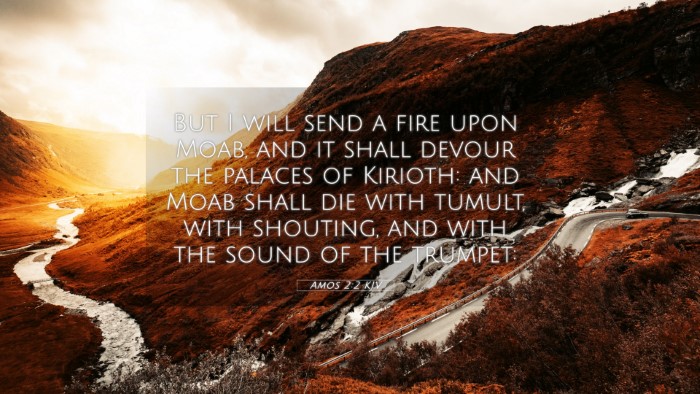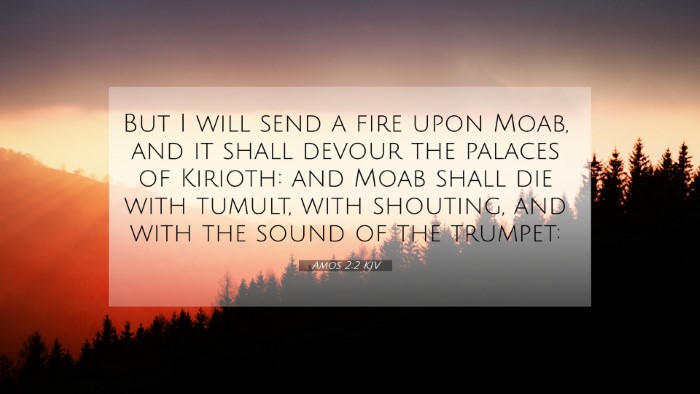Old Testament
Genesis Exodus Leviticus Numbers Deuteronomy Joshua Judges Ruth 1 Samuel 2 Samuel 1 Kings 2 Kings 1 Chronicles 2 Chronicles Ezra Nehemiah Esther Job Psalms Proverbs Ecclesiastes Song of Solomon Isaiah Jeremiah Lamentations Ezekiel Daniel Hosea Joel Amos Obadiah Jonah Micah Nahum Habakkuk Zephaniah Haggai Zechariah MalachiAmos 2:2 Similar Verses
Amos 2:2 Cross References
But I will send a fire upon Moab, and it shall devour the palaces of Kirioth: and Moab shall die with tumult, with shouting, and with the sound of the trumpet:
Uncover the Rich Themes and Topics of This Bible Verse
Listed below are the Bible themes associated with Amos 2:2. We invite you to explore each theme to gain deeper insights into the Scriptures.
Amos 2:2 Cross Reference Verses
This section features a detailed cross-reference designed to enrich your understanding of the Scriptures. Below, you will find carefully selected verses that echo the themes and teachings related to Amos 2:2 KJV. Click on any image to explore detailed analyses of related Bible verses and uncover deeper theological insights.
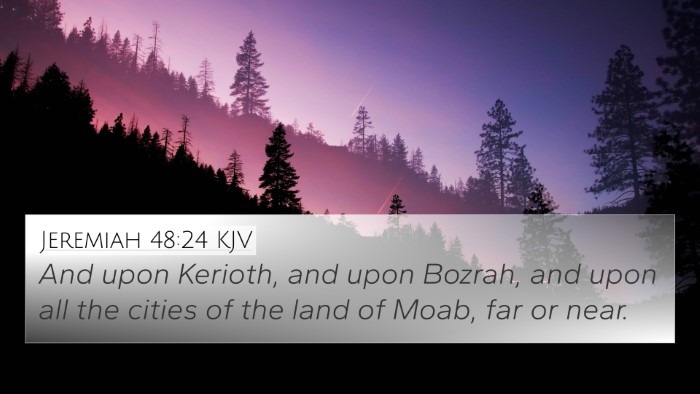
Jeremiah 48:24 (KJV) »
And upon Kerioth, and upon Bozrah, and upon all the cities of the land of Moab, far or near.
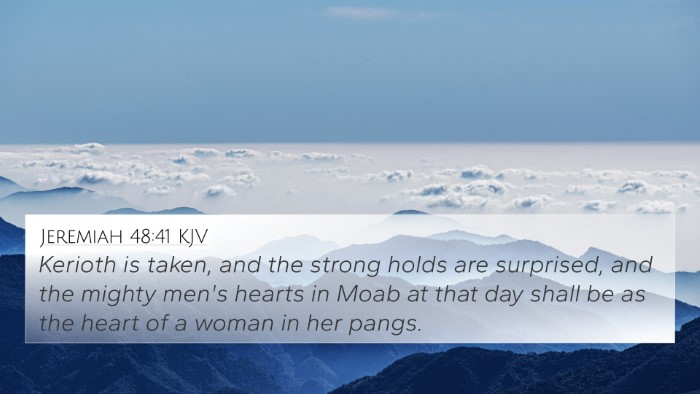
Jeremiah 48:41 (KJV) »
Kerioth is taken, and the strong holds are surprised, and the mighty men's hearts in Moab at that day shall be as the heart of a woman in her pangs.
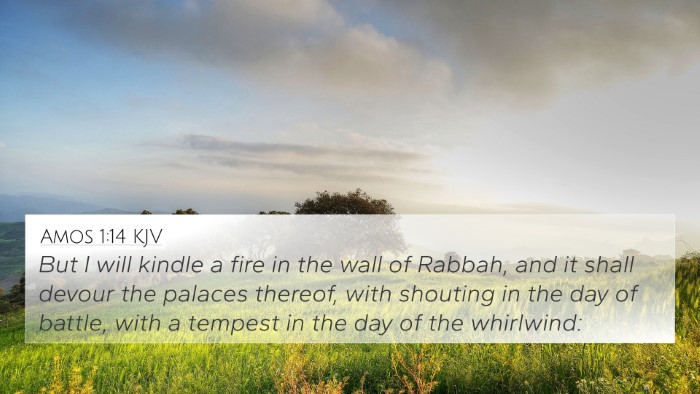
Amos 1:14 (KJV) »
But I will kindle a fire in the wall of Rabbah, and it shall devour the palaces thereof, with shouting in the day of battle, with a tempest in the day of the whirlwind:
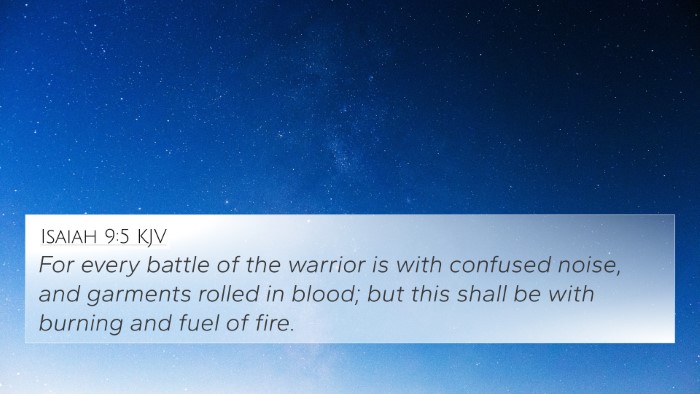
Isaiah 9:5 (KJV) »
For every battle of the warrior is with confused noise, and garments rolled in blood; but this shall be with burning and fuel of fire.
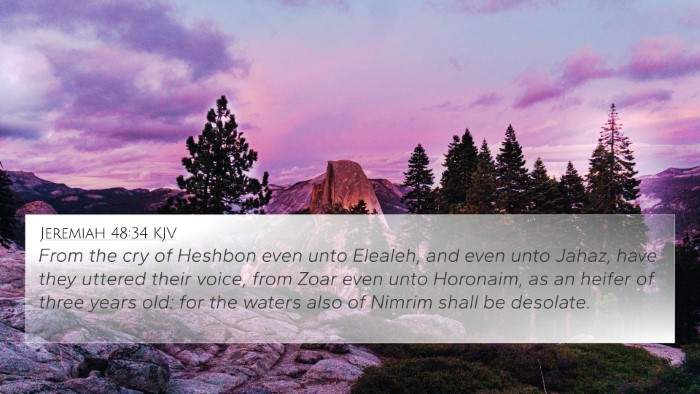
Jeremiah 48:34 (KJV) »
From the cry of Heshbon even unto Elealeh, and even unto Jahaz, have they uttered their voice, from Zoar even unto Horonaim, as an heifer of three years old: for the waters also of Nimrim shall be desolate.
Amos 2:2 Verse Analysis and Similar Verses
Understanding Amos 2:2
Amos 2:2 states, "But I will send a fire upon Moab, and it shall consume the palaces of Kerioth; and Moab shall die with tumult, with shouting, and with the sound of the trumpet." This verse serves as a powerful pronouncement of judgment against Moab, a nation neighboring Israel.
Contextual Background
The prophet Amos delivers this message in a time of moral decay and social injustice in Israel. While his primary audience is the Israelites, Amos includes oracles against surrounding nations to illustrate God's sovereignty and the extent of His judgment. This pragmatic use of prophecy highlights the broader themes of accountability and divine retribution.
Commentary Insights
- Matthew Henry: Henry emphasizes that Moab's judgment is a demonstration of God’s displeasure towards wickedness. He underlines the notion that God’s justice will prevail against any transgressors, and the "fire" symbolizes total destruction.
- Albert Barnes: Barnes further explains the significance of Kerioth, referring to it as a prominent city in Moab. He suggests that the "noise" signifies the magnitude of the coming destruction, portraying a vivid picture of chaos and defeat.
- Adam Clarke: Clarke elucidates the implications of the "tumult" and "shouting," indicating that these reactions may come not only from the citizens of Moab but could also reflect the joy and relief of the Israelites witnessing their foes' downfall.
Key Themes
Amos 2:2 encapsulates themes of divine judgment, accountability, and the consequences of sin. It speaks not only about Moab's fate but serves as a sobering reminder to all nations about the certainty of God's justice.
Bible Verse Cross-References
To enhance the understanding of Amos 2:2, it's valuable to explore related Bible verses that provide deeper insights into the themes of judgment and divine retribution:
- Jeremiah 48:1-47: This chapter details the impending doom of Moab, aligning closely with Amos' warning.
- Ezekiel 25:8-11: Similar themes of judgment against neighboring nations are portrayed here, reinforcing the notion of accountability.
- Isaiah 15-16: Prophecies regarding Moab’s demise expand on the context for Amos’s pronouncement.
- Numbers 24:17: Balaam’s prophecy about Moab serves as a precursor to their eventual downfall.
- 2 Kings 3:24-27: This account of battle against Moab illustrates the strife and divine intervention affecting the nation.
- Micah 5:6: Further emphasizes the consequences faced by those in rebellion against God.
- Romans 2:6-10: Highlights the Christian understanding of God's impartial judgment for both Jew and Gentile.
- Revelation 20:12-15: Illustrates the ultimate judgment that all nations will face, reflecting a universal theme in Scripture.
- Matthew 24:30: Discusses signs of the end times, echoing the judgment theme found throughout the prophets.
- Isaiah 66:15-16: God is depicted as coming in fire, akin to the imagery in Amos, further tying this theme across the Scriptures.
Thematic Connections
This verse also opens the door for inter-Biblical dialogue. Here are some methods for exploring these connections:
- Cross-referencing Biblical texts: Utilize tools such as concordances to find links between verses.
- Comparative Bible verse analysis: Assess similarities and contrasts with adjacent prophetic literature.
- Detailed cross-reference between Gospels: Identify parallels between Old Testament prophecies and their New Testament fulfillments.
- Identifying connections between Old and New Testament: Explore how themes from Amos resonate with the teachings of Jesus regarding judgment and justice.
Application
For contemporary readers, Amos 2:2 can serve as a reminder of the reality of divine justice. It challenges individuals and nations alike to evaluate their actions in light of God’s standards. Understanding the context and connecting it with other scriptures can enrich one's personal study and sermon preparation.
Conclusion
In summary, Amos 2:2 conveys a forceful message of impending judgment framed within a broader narrative of accountability. Understanding this verse in conjunction with other scriptural references deepens one’s insight into the nature of God’s justice and the consequences of human actions. Bible verse connections unveil the layered meanings contained within Scripture, enriching our faith and understanding.
